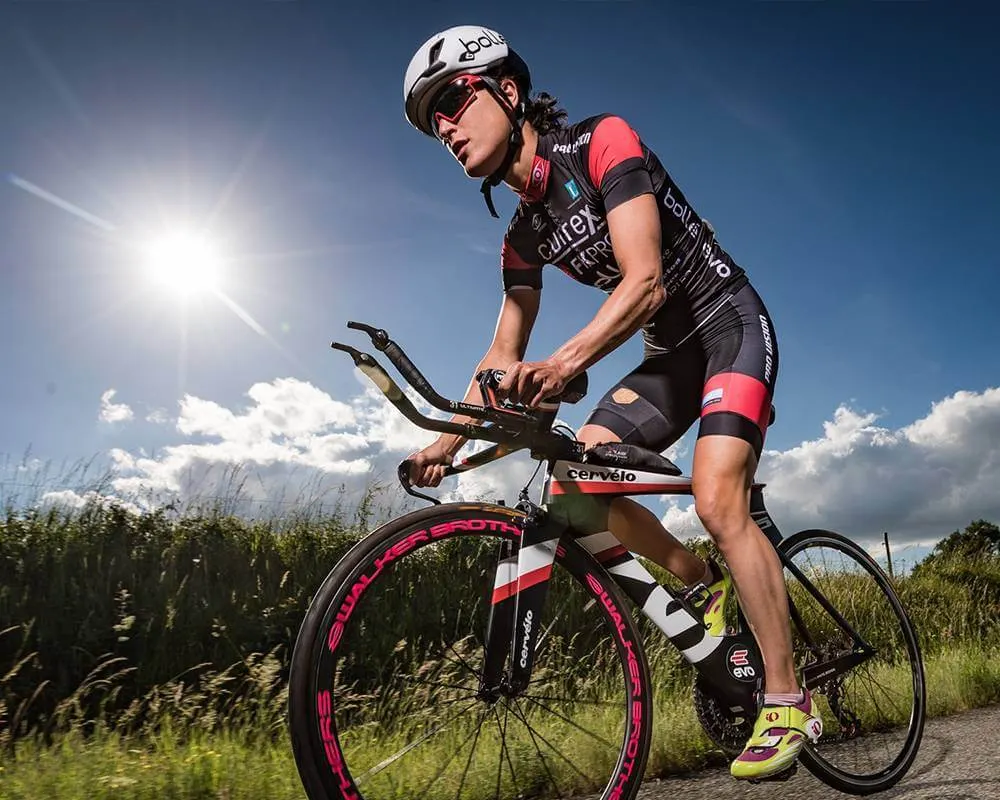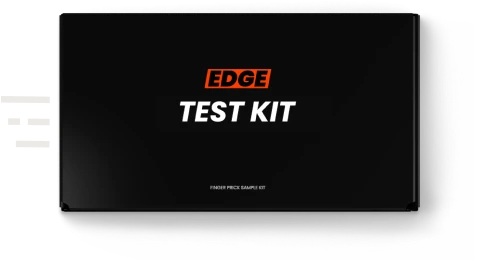
Triathlon
Returning To Exercise After Mild Covid-19
Endurance athlete, Alice Hector, talks about her journey of recovery after contracting COVID-19. Alice experienced mild symptoms but it was enough to set her training schedule back. Here she shares her experience and offers tips on how to recover well after COVID-19.
1 min read
Published on
March 1, 2021
Written by
EDGE
Share this article
INITIAL SYMPTOMS WERE NOT OBVIOUS
For a week, I didn’t notice that coronavirus had besieged me. I kicked myself for this – as a high-performance athlete we are supposed to be in tune with our bodies, but as I came to realise, covid-19 is a sneaky, it doesn’t behave like a typical cold or virus. I kept running with a slight “sinusy” feeling, one two-hour headache which went away, and a sore tongue (which has just come out as a symptom)!
Then something shifted. After just over a week I suddenly lost my sense of taste and smell which I’d only experienced before with the heaviest of colds. I still felt normal but didn’t feel like doing my high-intensity session on the bike that we do every Thursday evening, and certainly didn’t fancy a swim in 3-degree water that I had planned for the next day! My boyfriend thought I was being a bit of a wet lettuce, as did I, but something said no. I just put it down to ‘not feeling it’. But it was the loss of taste that prompted me to get it checked.
The key thing is, if I wasn’t trying to train, I wouldn’t have known anything was wrong. And I think this is where many athletes are now coming unstuck in their recovery. My non-athletic friends who’ve had it generally report they are back to normal, but I knew up to 3 weeks later I wasn’t, as my chest didn’t like running or cycling (walking was the opposite – I felt ten times better for doing lots of that). One friend even mentioned she had slept constantly the past two days but had recovered! It’s important to note that one person’s perception of recovery is not another’s.
After a few days rest and serving out the remainder of my isolation from onset of symptoms, I started with a 2-mile walk. The next day I did 3, then 4 and then tried a 20-minute run that felt a bit ugly in terms of a heavy chest. The walking felt enhancing, but the higher intensity of running was a no-go.
GETTING A DEEPER INSIGHT INTO POST-VIRAL INFECTION
I researched post-viral dangers in athletes and the big one that came up was fatigue, but also cardiac damage. I had no fatigue, but something in my chest wasn’t right and it didn’t feel like the lungs. Biomarkers in blood tests can show levels of inflammation in the body and specifically the heart, so my next port of call was to use Forth Edge to check these. What came back was very interesting.
My results were the best they have ever been. The irony is not lost on me that I am healthier post-nasty-virus than at any point as an elite triathlete (it was NOT a healthy pursuit for me, but I am still so glad I did it!). Inflammation was optimal and everything else was fine, except for one crucial factor, the stress hormone cortisol which was very high, and I didn’t even realise I was stressed.
ANXIETY’S IMPACT ON THE BODY
The anxiety surrounding the virus and the strange world in which we now live probably means everyone’s cortisol levels are high, and guess where that can present physically? You guessed it, the chest.
That’s not to be dismissive of anxiety, far from it. Eighteen months ago, I was full to the brim with the physical stress of training and racing and ended up being rushed to hospital for a few hours with a suspected stroke. All clear, but a wakeup call nonetheless. The mind can literally shut the body down, so that needs to be kept healthy too.
So, how to deal with anxiety?
For me, the main culprits were Twitter, mainstream media, and too much time indoors – being underworked can be as stressful as being overworked: think redundancy etc.
Obviously, I wasn’t going to push on until the chest pain subsided and I do believe there was a touch of heart strain in there too (even cardiac specific biomarkers are only indicators, not gospel), but I realised that if I had been doom scrolling on Twitter then hopped on the bike, my chest ache was worse than if I didn’t. I wasn’t engaging in the venom that often frequents that platform, but I was absorbing it.
My advice for anyone in recovery would be to limit the constant stream of bad news that surrounds us. Obviously, we must be aware of what’s going on, but you can do that in 20 minutes a day. A happy head will heal a body far quicker than one riddled in stress and other people’s opinions. Another point is you may not recognise you are stressed. I certainly find I need science to tell me!
My return to training took just under month, but that is not advice, as it is crucial to go with the signs your body give you. They will be there.
I’ve since had further blood tests, an X-ray and ECG which all came back clear and confirmed what the Forth Edge tests showed too. The doctor could hear a bit of crackling in my lungs, so there is some mild inflammation, but not enough to show on an X ray – but more than enough to stop me in my tracks though!
SUMMARY
It’s fine not to be an athlete for a bit. I’ve taken years off swimming and cycling before, and you can be back to where you were in a matter of weeks.
Walk first, being out in the fresh air is where the health is, so get out for a gentle stroll, maybe a mile at first, and see how that feels.
Maintain that daily, if you get no negative physical feedback, progress a mile or so at a time, making sure to check in the next day. Your body can feel a bit ‘wired’ after any exercise, which dilutes the feeling of any damage done. Let the body settle before progressing further.
In terms of my running, I’m holding at 10km, and still only easy paced. I will still stick to easy intensity for the foreseeable. High (or any) cardiovascular intensity is the absolute last thing we should bring back. Base training is a very valuable resource anyway, so see it as an opportunity to bank a good amount of that to start with.
Walking was a new challenge, therefore I had no perceived notion of what my distances and pace should be. I have seen plenty of recovering COVID athletes voicing frustration recently that their body won’t yet allow them to run or bike as they were. My answer to this is to do something new! Whether it’s walking, stretching, or yoga, pick something you haven’t done much of before, but which is likely to improve your performance in your sport longer term, should you get better at it. Comparison is the thief of joy, for now.
What’s imperative is that no matter how mild your symptoms, the after-effects are reportedly lingering in athletes, and you simply cannot push on with this one, as that risks permanent damage. The after-effects can potentially be worse than the virus itself. Have faith that your body is clever, it will heal (even if that takes a while), and it will give you signs along the way to help. Please listen to those signs and be as patient as necessary.
Take care, everyone!
DR NICKY KEAY COMMENTS:
This insightful story from Alice shows how athletes can find it challenging not to train. And this becomes even more of a psychological challenge in recovery from viral illness, especially once any acute symptoms have subsided. Yet, gradual return is what is important for long term health and performance as Alice discusses.
This gradual, personalised return to training has been recognised to be essential in recovery from other viral illnesses like glandular fever. Same applies for COVID 19. There are guidelines for this gradated return to training for elite sports athletes (1). Although, ultimately listening to your body (rather than social media) is the best approach. This applies to non-elite athletes too, such as professional dancers and exercisers of all ages. As an “older” exerciser, after recovering from COVID 19, I continued to feel restricted/limited cardiovascularly in exercise for about 6 months. So as Alice highlights, the most important thing is to do what is best for you.
Dr Nicky Keay, BA, MA (Cantab), MB, BChir, MRCP. Honorary Fellow Dept Sport and Exercise Sciences, Durham University.
Blood test for
Cyclists
Male & Female Tests
sports doctor review
Results in 2 working days
Flexible subscription
-
Elliott N, Martin R, Heron N, et al Infographic. Graduated return to play guidance following COVID-19 infection British Journal of Sports Medicine 2020;54:1174-1175.
Get 10% off your first order
Want regular tips on how to make the most of your results? Join our newsletter and we'll give you 10% off your order!
